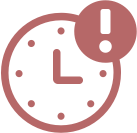
 Out of Stock:
Out of Stock:
This product will not ship immediately. Contact us for estimated delivery.

 Out of Stock:
Out of Stock:
This product will not ship immediately. Contact us for estimated delivery.
The Baader Planetarium Moon & Skyglow (Neodymium) filter brings an entirely unique approach to planetary contrast enhancement and light pollution reduction. Based on earlier research at Carl Zeiss, Baader has developed a filter that uses Neodymium glass which filters out a few specific wavelengths from streetlights as well as skyglow from the Moon. The unique spectral characteristics of Neodymium also boost color contrasts by isolating the Red, Green, and Blue regions (so-called RGB enhancement). The result is a filter that leaves natural colors mostly intact, but significantly enhanced.
Planetary and Lunar views are improved in all scopes, reflectors, refractors (APO or Achro). Jupiter's Great Red Spot and ruddy hues of the bands are noticeably enhanced, and contrast of Martian surface features boosted. The Background sky is darkened, and subtle details improved. The filter's high efficiency preserves image brightness, and many Galaxies, Nebulae and Globular Star Clusters are improved due to the reduction of skyglow from artificial lighting. For a hands-on review of the Moon & Skyglow Filter, visit the accessories review section at www.cloudynights.com.
The high quality of Baader Planetarium filters permits stacking with no image degradation. Achromat owners will find the combination of Moon & Skyglow and the new Fringe Killer filter to be ideal for planetary viewing. The high light throughput and natural coloration will make achromats perform more like an apochromat. An integrated version is also available, the Semi-APO filter.
The Moon & Skyglow is also optimized for imagers, due to its full IR-blocking (See the filter curve on the datasheet included in the link, below).
The filter substrate is a special custom melt of Neodymium doped glass, designed for specific transmission characteristics, and made only for Baader Planetarium. In addition to it's unique spectral characteristics, unlike most filters, the Baader Moon & Skyglow surfaces are optically polished to deliver the best possible image sharpness and contrast.
The images below demonstrate the large contrast improvement on Mars. The image on the left was taken without filtration, while the image on the right was taken through a Moon & Skyglow. The Moon & Skyglow image shows significantly higher contrast and surface features barely visible without the filter. Both images were acquired identically, without any image processing or contrast enhancement, and give a very good idea of the planetary contrast improvement that is seen visually. The Moon & Skyglow never leaves our own telescopes when observing the planets and moon.